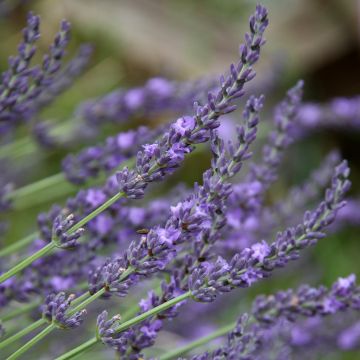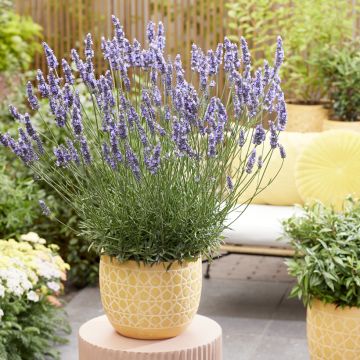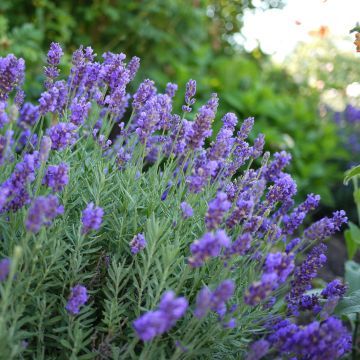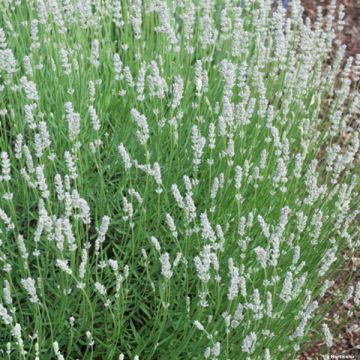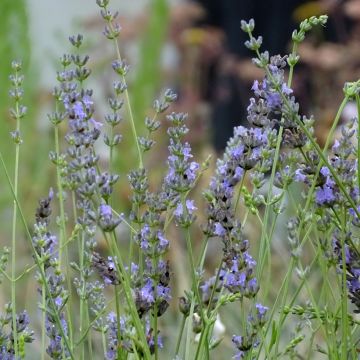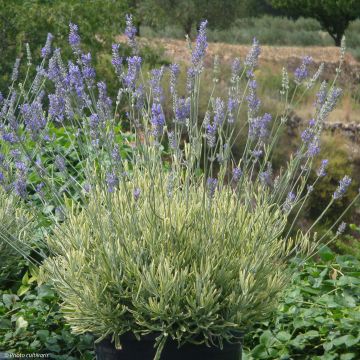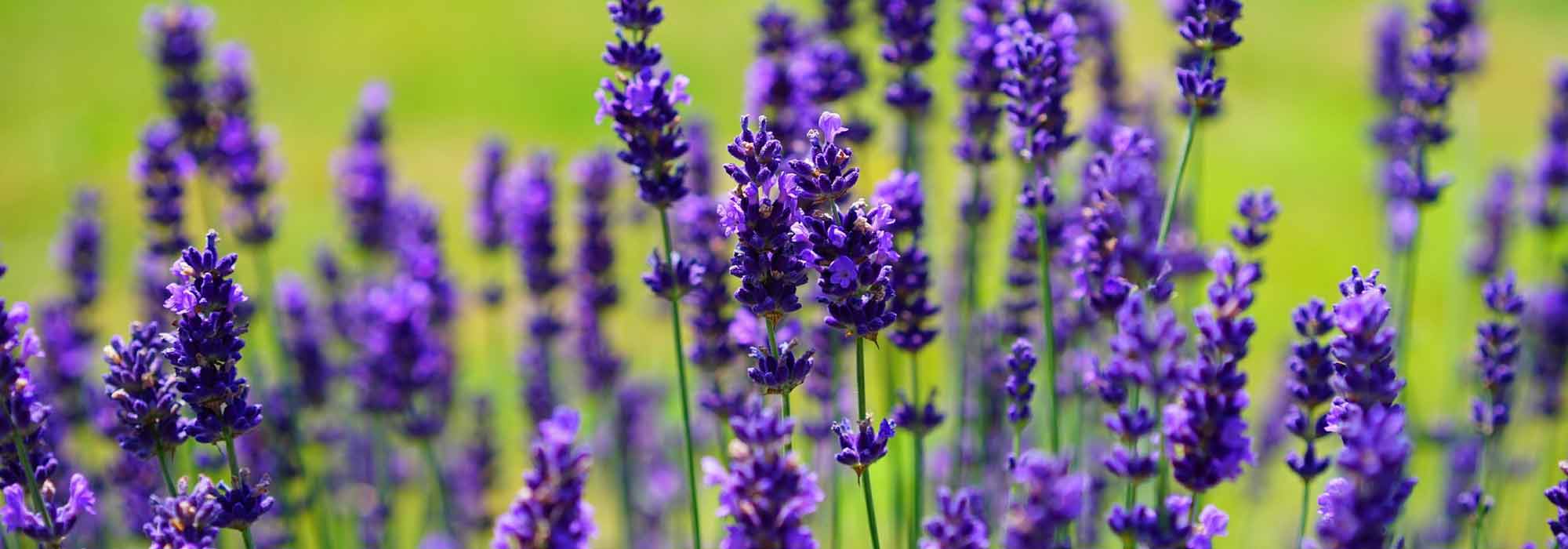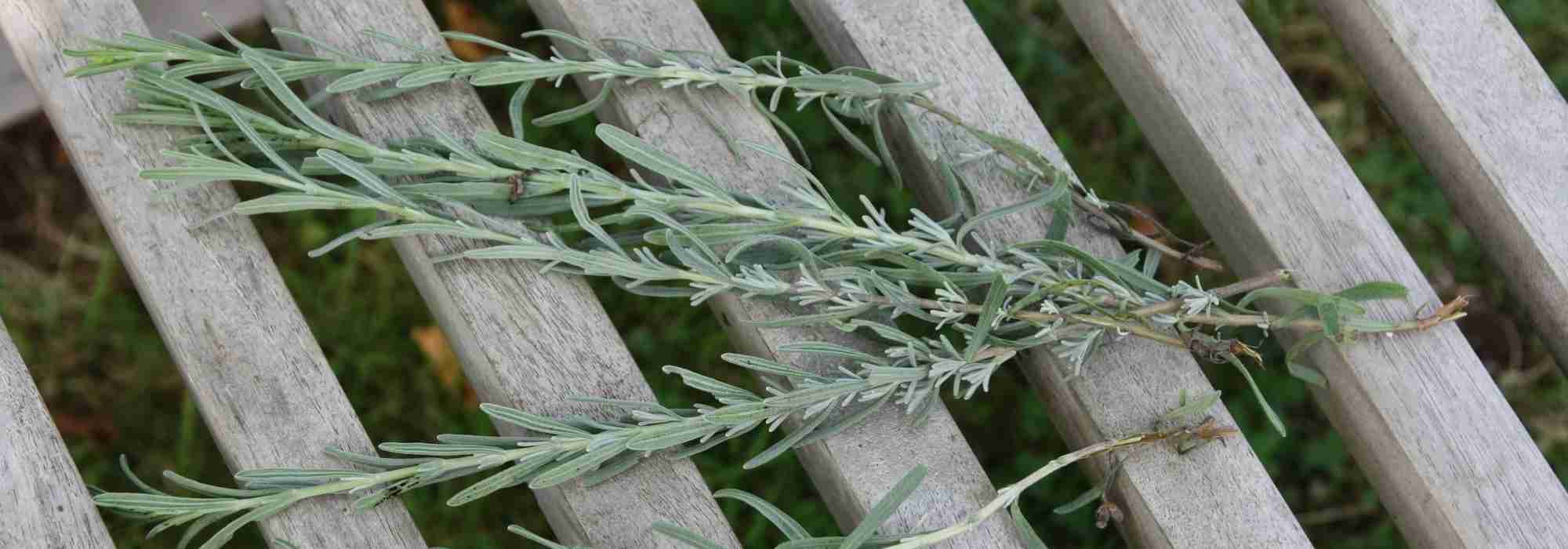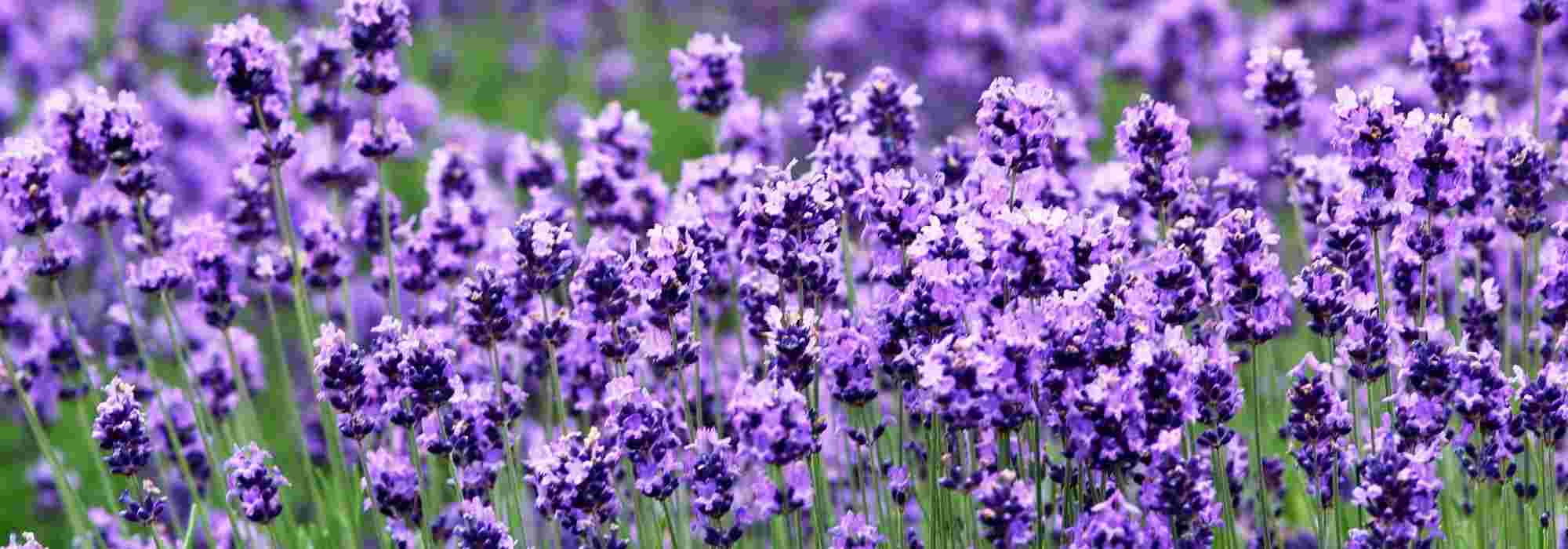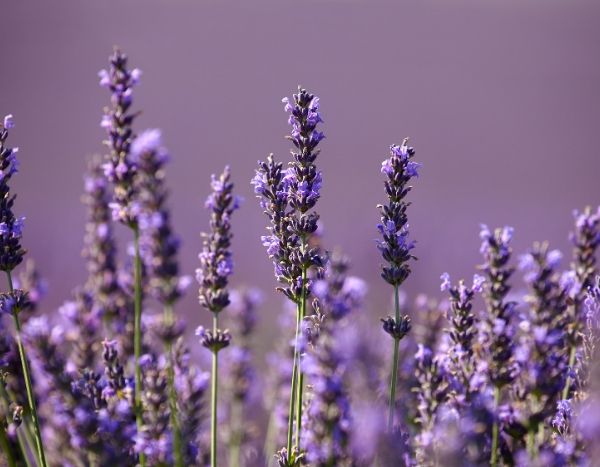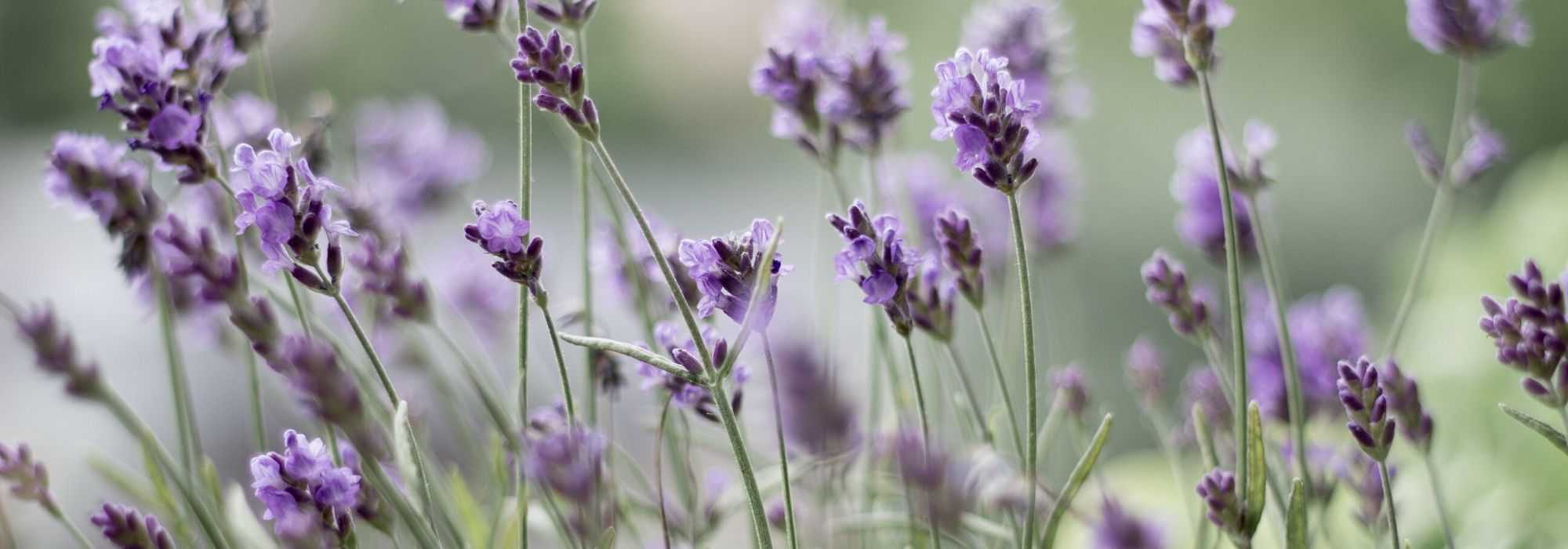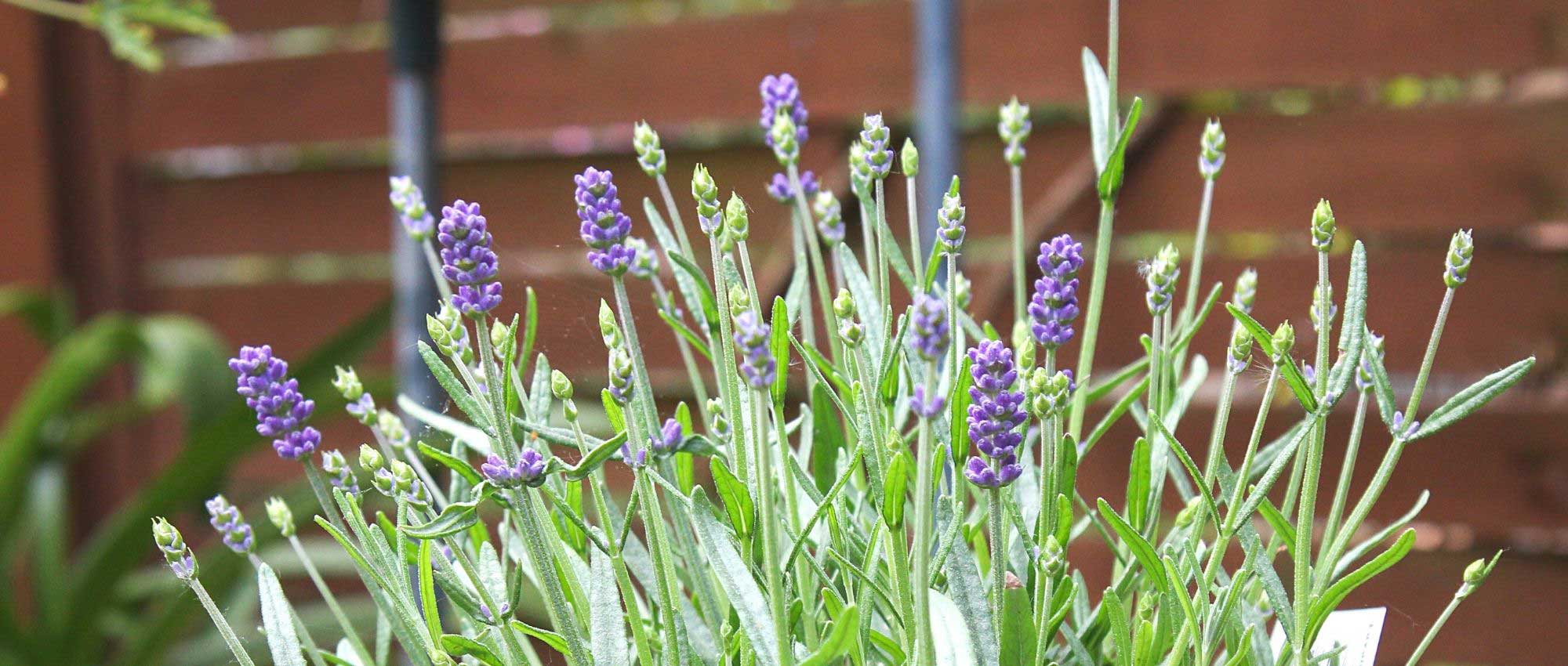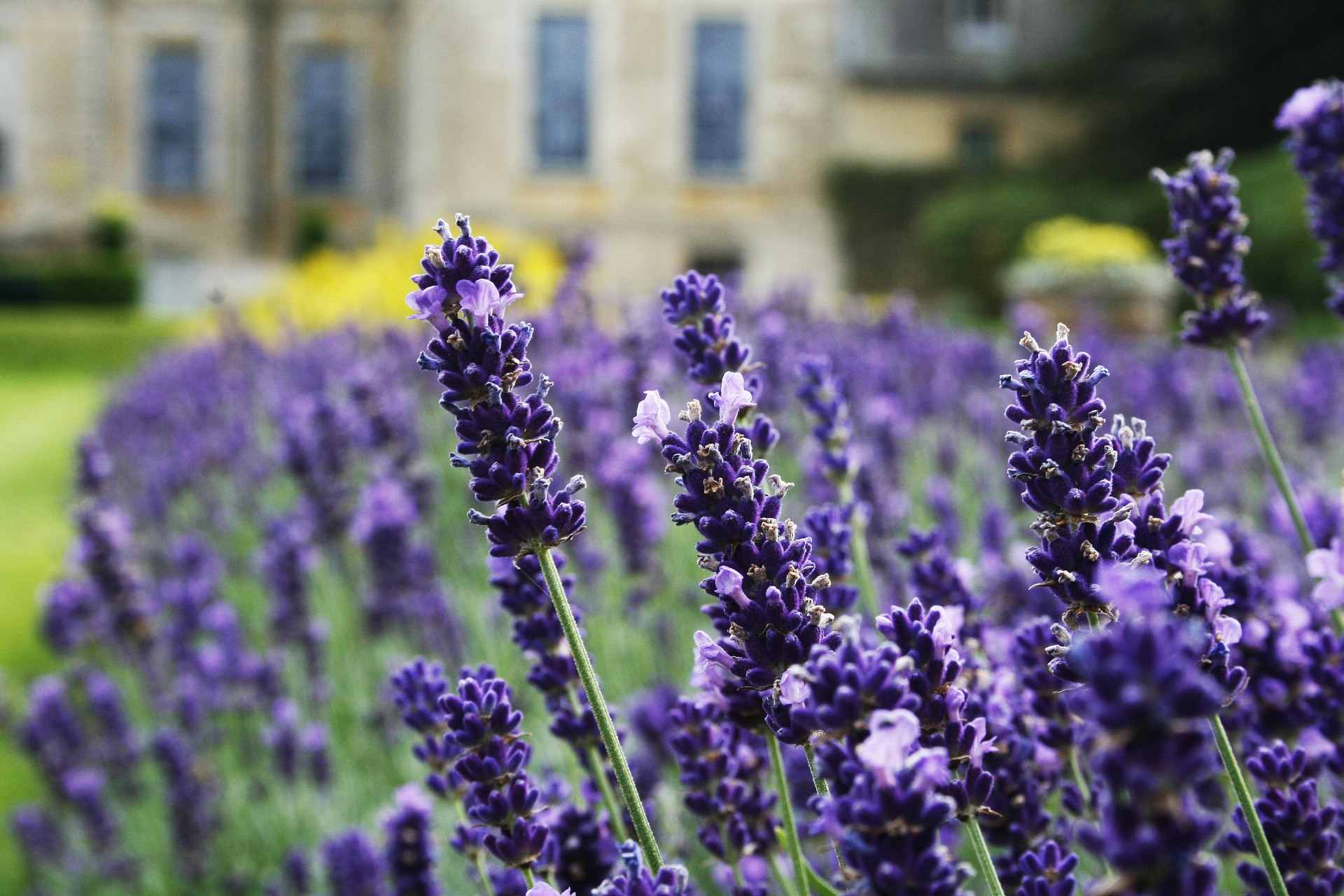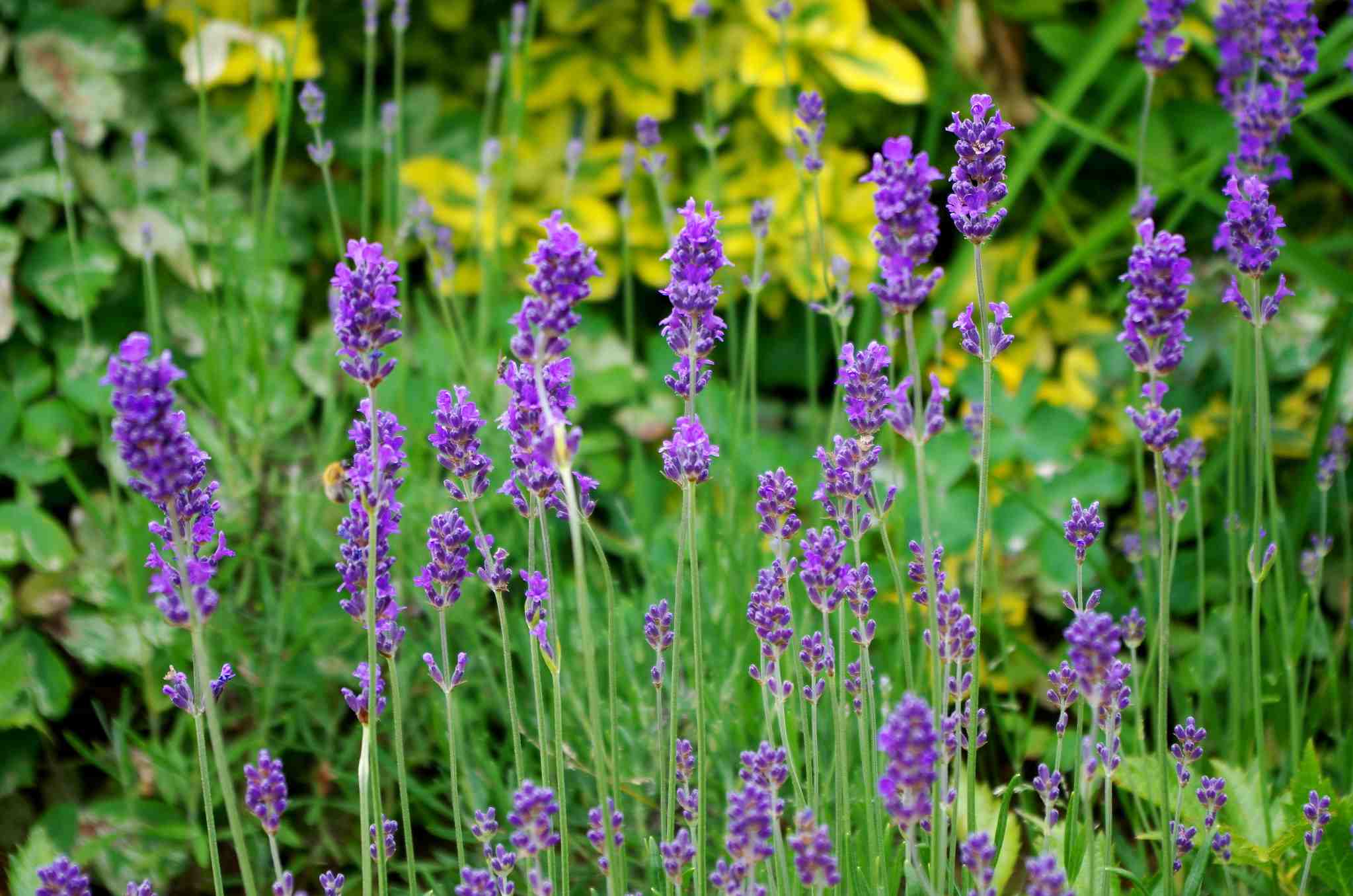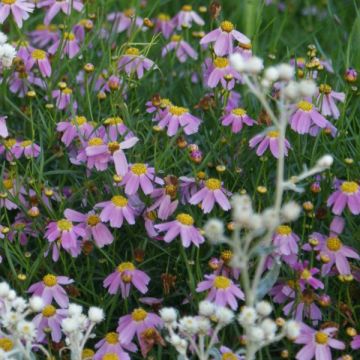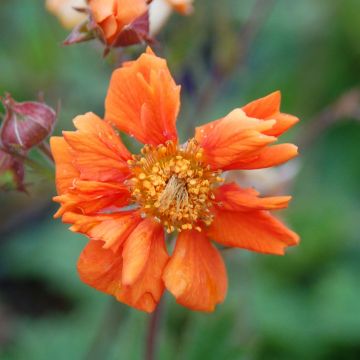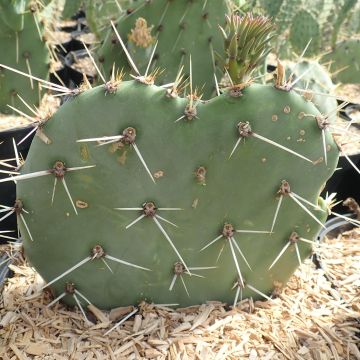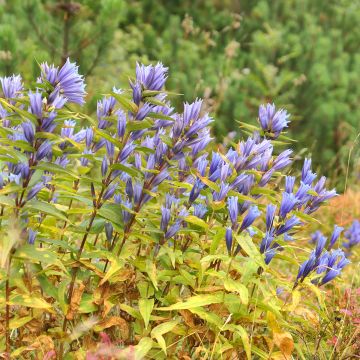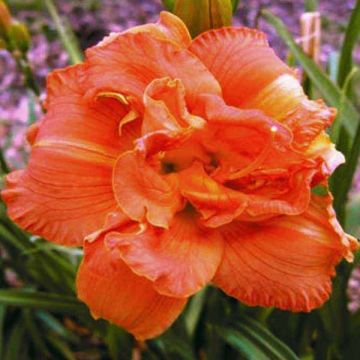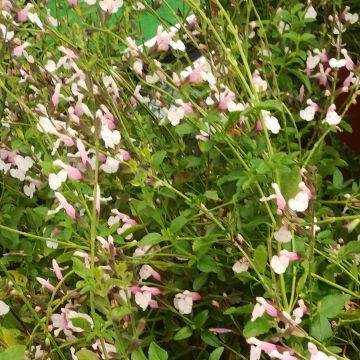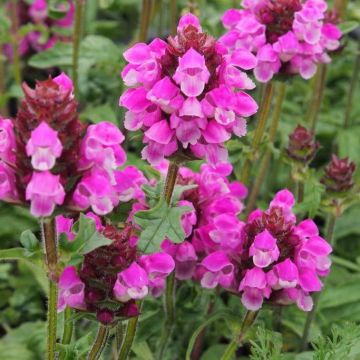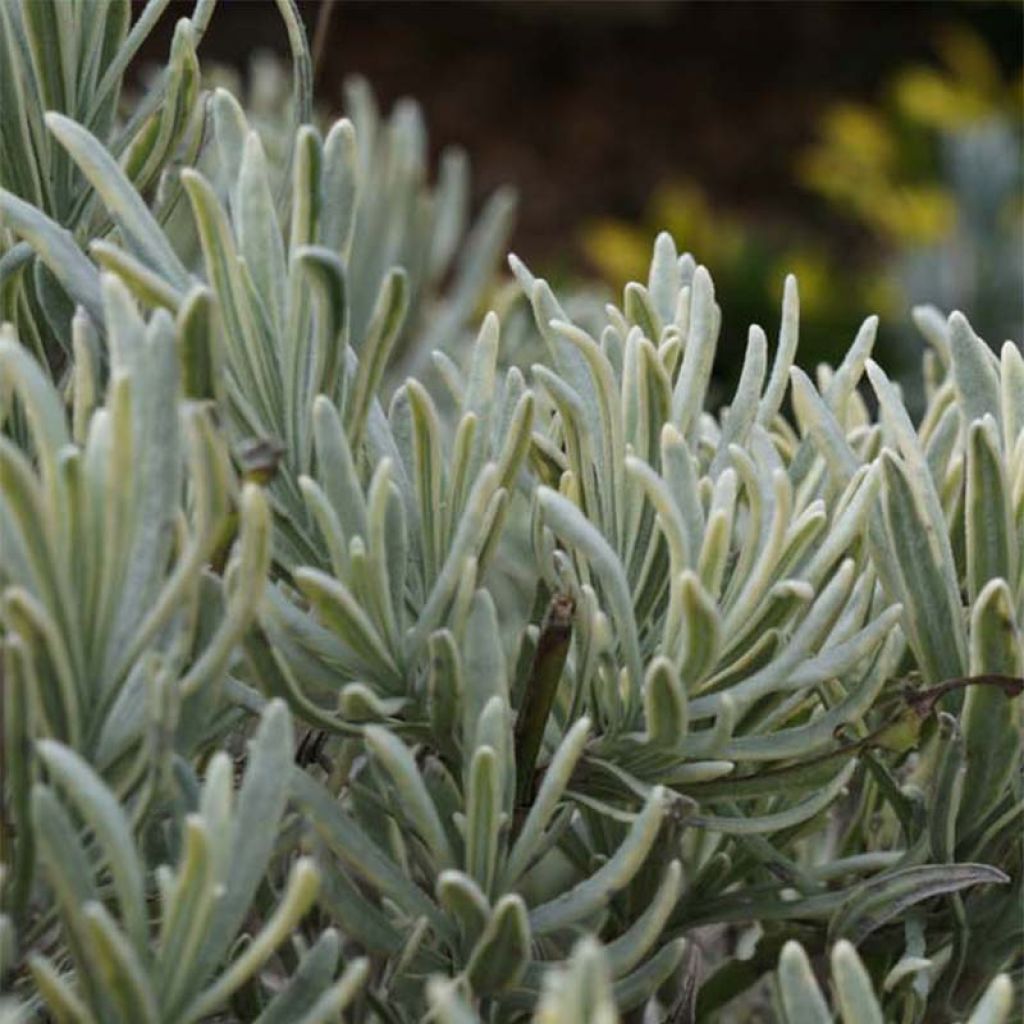

Lavandula intermedia Walburtons Silver Edge - Lavandin
Lavandula intermedia Walburtons Silver Edge - Lavandin
Lavandula x intermedia Walburton's Silver Edge
Lavandin, Dutch Lavender
Complete satisfaction. Young plant very strongly scented and magnificent.
Jean-Marie, 28/04/2020
Special offer!
Receive a €20 voucher for any order over €90 (excluding delivery costs, credit notes, and plastic-free options)!
1- Add your favorite plants to your cart.
2- Once you have reached €90, confirm your order (you can even choose the delivery date!).
3- As soon as your order is shipped, you will receive an email containing your voucher code, valid for 3 months (90 days).
Your voucher is unique and can only be used once, for any order with a minimum value of €20, excluding delivery costs.
Can be combined with other current offers, non-divisible and non-refundable.
Why not try an alternative variety in stock?
View all →This plant carries a 12 months recovery warranty
More information
We guarantee the quality of our plants for a full growing cycle, and will replace at our expense any plant that fails to recover under normal climatic and planting conditions.

Would this plant suit my garden?
Set up your Plantfit profile →
Description
Lavandula intermedia Walberton's Silver Edge is a variety of hybrid lavender of modest size that stands out for its unique foliage. Each leaf is rounded, grey-green and bordered in white, giving the plant a snowball-like appearance. Bright all year round, it has beautiful fragrant flowers in summer, with long spikes of lavender-blue flowers, carried on long stems, somewhat scattered on its dense foliage. It is an evergreen low shrub ideal for dry or rocky, well-drained soils, in a sunny position.
The genus Lavandula belongs to the Lamiaceae family. This hybrid is obtained by crossing L. angustifolia and L. latifolia. These two species are found in the wild in the same medium mountain environment and naturally crossbreed. They have given rise to numerous cultivars, all easy to plant in the garden, tolerant of limestone. The 'Walburton's Silver Edge' hybrid forms a beautiful round cushion, with dense vegetation, reaching 70 cm (28in) in flower, 40 cm (16in) for the foliage, and a diameter of 50 cm (20in). Its evergreen leaves, wider and rounder than those of other species and varieties, are variegated with grey and white. They are even lighter when the soil is dry and the climate is hot. On the other hand, in a cool climate, what the plant gains in foliage and robustness, it loses in colour and fragrance intensity. This variety has summer flowers in July-August. Long, thin stems emerge well above the foliage , carrying long spikes of medium blue, typically lavender-blue flowers, which are very honey-scented.
Lavender is synonymous with holidays. It evokes the sun, the song of cicadas, arid and fragrant hillsides , and it is a part of this atmosphere that we try to capture in our gardens. Lavenders have many different uses. In nature, these plants always live in poor, rocky, dry, and well-drained environments. It is only natural that they will find their place in rock gardens alongside rockroses, sunroses, and wormwoods. Large groupings can be created on large, well-drained slopes by planting different lavender varieties, whose volumes, flowerings, and foliage will create many undulations. Dry ground perennials with bright or soft flowers can be mixed in to punctuate the landscape: Linaria 'Canon Went', Salvia jamensis, gaillardias, and Hesperaloe parviflora with its red spikes, adding Convolvulus althaeoides, a bindweed that will run everywhere between and within the cushions without suffocating them. A lavender border will be prettier when overhanging a wall, with aubrietas, for example.
Lavandula intermedia Walburtons Silver Edge - Lavandin in pictures
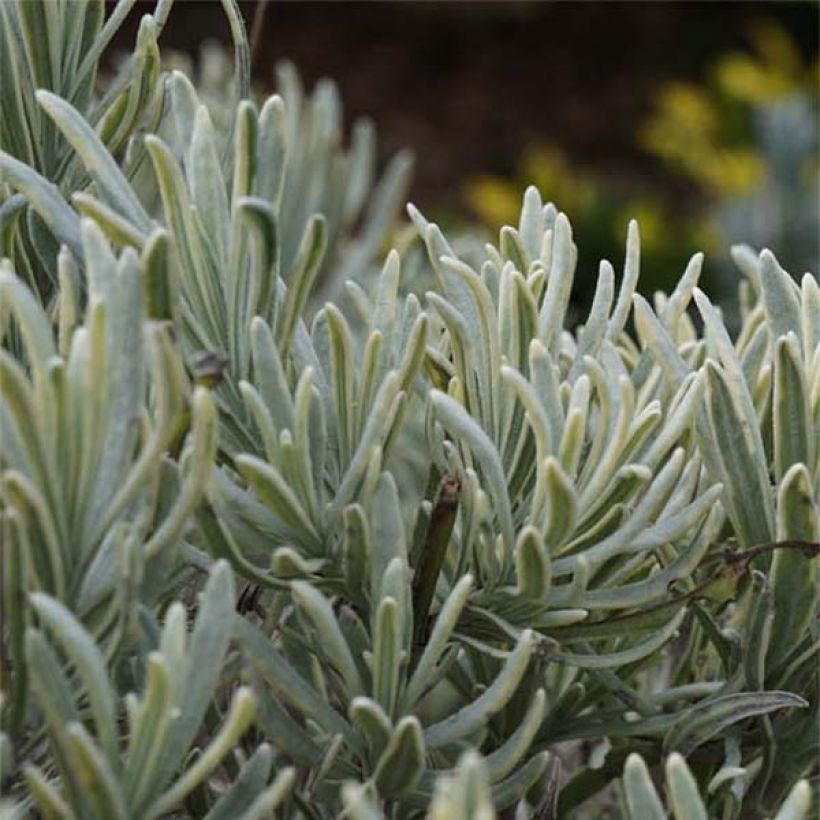

Flowering
Foliage
Plant habit
Botanical data
Lavandula
x intermedia
Walburton's Silver Edge
Lamiaceae
Lavandin, Dutch Lavender
Cultivar or hybrid
Other Lavandin
View all →Planting and care
Plant Lavandula intermedia Waburton's Silver Edge in well-drained soil, even rocky soil. In nature, lavenders always live in poor and dry environments. They hate summer watering, which makes them sick and disappear, as they are very sensitive to fungal diseases induced by the combination of heat and moisture. In winter, they need perfect drainage, and in summer, they need to be kept dry. Lavender will age better in poor soil, as its growth will be slower, and it will have less tendency to thin out from the base. To limit this phenomenon, prune it from a young age, after flowering or in autumn, just above the first buds visible on the wood. Lavenders never regrow on old wood. The clump will therefore branch out more and more, remaining compact, eventually forming beautiful round and dense cushions. Plant them in gravel, rocks, coarse sand, but definitely no potting soil or fertiliser.
`
.
Planting period
Intended location
Care
Planting & care advice
-
, onOrder confirmed
Reply from on Promesse de fleurs
Similar products
Haven't found what you were looking for?
Hardiness is the lowest winter temperature a plant can endure without suffering serious damage or even dying. However, hardiness is affected by location (a sheltered area, such as a patio), protection (winter cover) and soil type (hardiness is improved by well-drained soil).

Photo Sharing Terms & Conditions
In order to encourage gardeners to interact and share their experiences, Promesse de fleurs offers various media enabling content to be uploaded onto its Site - in particular via the ‘Photo sharing’ module.
The User agrees to refrain from:
- Posting any content that is illegal, prejudicial, insulting, racist, inciteful to hatred, revisionist, contrary to public decency, that infringes on privacy or on the privacy rights of third parties, in particular the publicity rights of persons and goods, intellectual property rights, or the right to privacy.
- Submitting content on behalf of a third party;
- Impersonate the identity of a third party and/or publish any personal information about a third party;
In general, the User undertakes to refrain from any unethical behaviour.
All Content (in particular text, comments, files, images, photos, videos, creative works, etc.), which may be subject to property or intellectual property rights, image or other private rights, shall remain the property of the User, subject to the limited rights granted by the terms of the licence granted by Promesse de fleurs as stated below. Users are at liberty to publish or not to publish such Content on the Site, notably via the ‘Photo Sharing’ facility, and accept that this Content shall be made public and freely accessible, notably on the Internet.
Users further acknowledge, undertake to have ,and guarantee that they hold all necessary rights and permissions to publish such material on the Site, in particular with regard to the legislation in force pertaining to any privacy, property, intellectual property, image, or contractual rights, or rights of any other nature. By publishing such Content on the Site, Users acknowledge accepting full liability as publishers of the Content within the meaning of the law, and grant Promesse de fleurs, free of charge, an inclusive, worldwide licence for the said Content for the entire duration of its publication, including all reproduction, representation, up/downloading, displaying, performing, transmission, and storage rights.
Users also grant permission for their name to be linked to the Content and accept that this link may not always be made available.
By engaging in posting material, Users consent to their Content becoming automatically accessible on the Internet, in particular on other sites and/or blogs and/or web pages of the Promesse de fleurs site, including in particular social pages and the Promesse de fleurs catalogue.
Users may secure the removal of entrusted content free of charge by issuing a simple request via our contact form.
The flowering period indicated on our website applies to countries and regions located in USDA zone 8 (France, the United Kingdom, Ireland, the Netherlands, etc.)
It will vary according to where you live:
- In zones 9 to 10 (Italy, Spain, Greece, etc.), flowering will occur about 2 to 4 weeks earlier.
- In zones 6 to 7 (Germany, Poland, Slovenia, and lower mountainous regions), flowering will be delayed by 2 to 3 weeks.
- In zone 5 (Central Europe, Scandinavia), blooming will be delayed by 3 to 5 weeks.
In temperate climates, pruning of spring-flowering shrubs (forsythia, spireas, etc.) should be done just after flowering.
Pruning of summer-flowering shrubs (Indian Lilac, Perovskia, etc.) can be done in winter or spring.
In cold regions as well as with frost-sensitive plants, avoid pruning too early when severe frosts may still occur.
The planting period indicated on our website applies to countries and regions located in USDA zone 8 (France, United Kingdom, Ireland, Netherlands).
It will vary according to where you live:
- In Mediterranean zones (Marseille, Madrid, Milan, etc.), autumn and winter are the best planting periods.
- In continental zones (Strasbourg, Munich, Vienna, etc.), delay planting by 2 to 3 weeks in spring and bring it forward by 2 to 4 weeks in autumn.
- In mountainous regions (the Alps, Pyrenees, Carpathians, etc.), it is best to plant in late spring (May-June) or late summer (August-September).
The harvesting period indicated on our website applies to countries and regions in USDA zone 8 (France, England, Ireland, the Netherlands).
In colder areas (Scandinavia, Poland, Austria...) fruit and vegetable harvests are likely to be delayed by 3-4 weeks.
In warmer areas (Italy, Spain, Greece, etc.), harvesting will probably take place earlier, depending on weather conditions.
The sowing periods indicated on our website apply to countries and regions within USDA Zone 8 (France, UK, Ireland, Netherlands).
In colder areas (Scandinavia, Poland, Austria...), delay any outdoor sowing by 3-4 weeks, or sow under glass.
In warmer climes (Italy, Spain, Greece, etc.), bring outdoor sowing forward by a few weeks.































